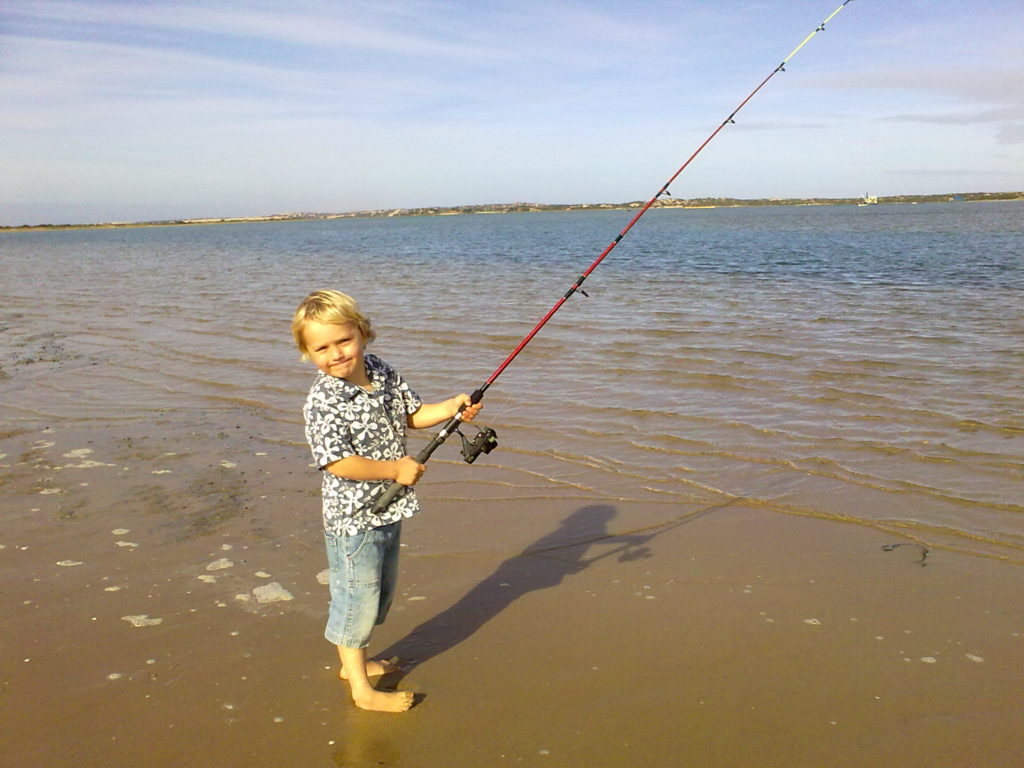By Tyler Brady of AFellowFisherman.com
Choosing which fishing line can be a little confusing, right?
With so many different manufacturers of lines out there, all offering multiple products, it can be hard to know which one to use for your next fishing trip. Do you go with monofilament (mono), braided, or fluorocarbon line?
We’re here to help make things a little less confusing. In this article, I’ll break down the three most popular choices amongst anglers and go over when to use them. You’ll be an expert in no time!
3 Most Popular Fishing Lines
- Monofilament
- Braided
- Fluorocarbon
Monofilament Fishing Line
Monofilament fishing line is, without a doubt, the most popular choice today. It’s affordable, durable, and easy to use. This fishing line is made of a single strand of nylon stretched out with a thin tube during manufacturing.
Pros
A monofilament fishing line is ideal for anglers of all skill levels. It’s easy to cast, inexpensive, holds knots well, and overall easy to handle (even with chubby fingers). Moreover, mono possesses more stretch than its’ competitors allowing it to stand up to the unexpected big game fish prepared to put up a fight. However, this extra stretching leads me to talk about the cons of using mono.
Cons
One downside to monofilament is also one of its’ strengths, that is, the malleability. Being more malleable than its’ competitors gives way to being less accurate and hard to hit your target when casting. In addition, mono has proved to absorb water over time, which shortens its lifespan. A short lifespan will naturally lead to more reloading your reel and less time fishing.
When to Use Monofilament
Monofilament fishing line is perfect for anglers fishing in clear water or targeting smaller fish. Available in many colors, this line can be less visible in the water than other types of lines, making it great for fishing in stealth mode. Because mono has more stretch, it’s also great for beginners who are still learning how to fight a fish.
Braided Fishing Line
A braided fishing line comprises several strands of polyethylenes that are braided together. This fishing line is robust and durable, making it perfect for fishing in harsh conditions.
Pros
A braided fishing line is known to be abrasion-resistant and withstand a lot of tension without breaking. In addition, braided line has no line memory and no stretch resulting in ultimate precision but giving way to less “shock-strength.”
Cons
One downside to a braided line is that it can be considerably challenging to tie knots. Moreover, braided lines are more likely to break from fish’s sharp teeth, such as piranha, bluefish, and bowfin. Lastly, braided is typically the most expensive line among the three discussed here.
When to Use Braided Fishing Line
A braided fishing line is perfect for anglers fishing in water with low visibility or fishing in areas with heavy vegetation. It has the strength to cut through grasses rather than being held up. When comparing braid vs. mono, the former has the upper hand in deep water fishing with any reel but especially on spinning reels.
Fluorocarbon Fishing Line
Fluorocarbon fishing line is made up of fluoropolymer, making it nearly invisible in the water. This fishing line is perfect for fishing in clear water and when targeting ” line shy fish.”
Pros
The biggest pro to using fluorocarbon fishing lines is that they are nearly invisible in the water. In addition, this line is resistant to abrasion, meaning it can hold up against rocks and other debris on the bottom of the water.
Cons
One downside to fluorocarbon fishing line is that it is on the expensive side of the spectrum. In addition, it tends to tangle easier and have more line memory compared to braid and mono.
When to Use Fluorocarbon Fishing Line
A fluorocarbon fishing line is ideal to be used as a leader. It is less likely to be noticed and spook fish as they approach a hook. In addition, it is advantageous to use while employing bottom fishing techniques such as jigging or drop shotting.

